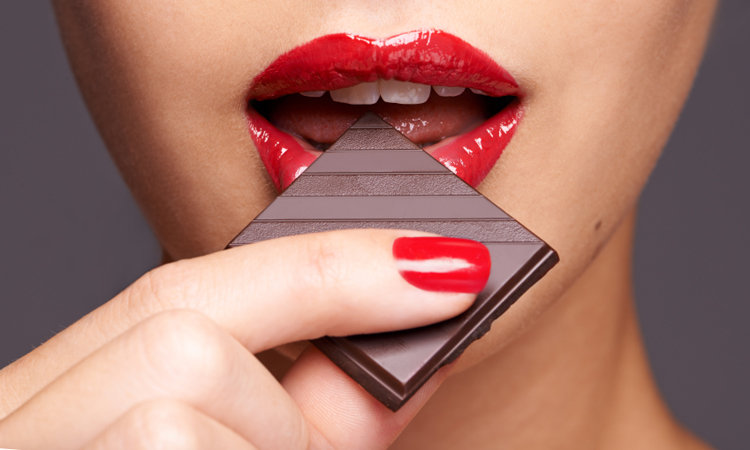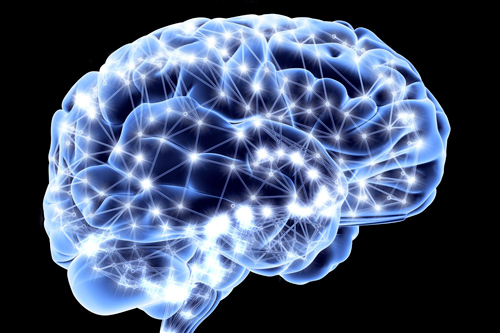Some days I really crave peanut butter. It’s the kind of craving that follows me everywhere, whispering to be sated. It breaks my concentration and makes it hard to sit still. The only way to calm the urge’s jittery feeling is to grab a spoon and open a jar. From that first creamy smooth lick to the final tongue-sticky swallow, I’m in pure heaven.
Curious about why I sometimes have this undeniable flat-out need for the paste of ground roasted nuts, I asked my physician what she thought it meant. Her answer: “It means your body is calling for the nutrient blend it finds in peanut butter.” Her advice: “When your body calls for peanut butter, give it peanut butter.”
While I love that advice (and often indulge it wholeheartedly), the truth is we can’t always give in to our cravings. From the relatively harmless stomachache of too much peanut butter to the three-day bender of alcoholism, we need ways to rewire our brain’s cravings. What can make this so hard to do is that we are actually hardwired to crave.
The Biological Basis of Cravings
Dr. Omar Manejwala is an expert when it comes to craving. The author of Craving: Why We Can’t Seem to Get Enough, he works extensively with what drives us to crave and how we can manage the urge.
First, on his blog Manejwala explains that our overwhelming desire (craving) for anything has roots in the survival instinct: “the drive to crave led to selective advantage as those who craved foods and behaviors that were either necessary for survival or that conferred advantage survived and reproduced, and those who didn’t died.” The problem: While those drives originally had evolutionary relevance, now they may have become maladaptive.
Second, from a neuroscience perspective the brain easily creates a craving culture. In a recent phone interview, Dr. Manejwala explained three primary events that create craving circuitry:
Deep in the brain there’s a region called the medial forebrain bundle (part of the brain’s system responsible for integrating reward and pleasure). This area activates every time reward exceeds expectations. The disturbance of that circuit is partially responsible for addictions and cravings. Located within this circuit lies the ventral tegmental area (one of two major dopamine pathways), which contains nerve cells that release dopamine into the primary reward center of the brain, the nucleus accumbens.
The amygdala is a part of the brain involved in determining the emotional significance of experiences. Intense rewarding behaviors increase the serotonin in the hypothalamus, which activates opiate receptors in the hypothalamus. This results in the release of opiate-like substances called enkephalins into the ventral tegmental area, which is very dopamine-rich. The released enkephalins reduce the activity of GABA, which is the brain’s primary inhibitory neurotransmitter. That reduction in GABA causes an increase in dopamine (reward) release.
The prefrontal cortex, which is involved in executive decision making, also plays a role in cravings. Because we often get triggered or lead back into situations that are very high risks for cravings, planning is essential to cravings management. The problem: Impairments in the prefrontal cortex prevent us from conducting even the simplest kinds of planning activities or exercises that would keep us away from high-risk or dangerous scenarios.
Summing up the problem, Manejwala explains: “The ability to act contrary to our impulses, or suppress our habitual behavior, lives in the prefrontal cortex. If you have impaired functioning in your prefrontal cortex, you can’t act in opposition to your habit. You’re a slave to your habit. You can’t question and change your behaviors in opposition to that, and that’s really what cravings hijack.”
Being able to question ourselves so that we can plan to evade or inhibit urges is key to managing cravings. We all know that primal shut-down-all-critical-thinking-and-give-me-what-I-want feeling makes it seem as if refusing the reward is not an option. Resist the siren call of peanut butter? I don’t know if I can do that right off the bat. But Manejwala offers some simple daily practices to help turn cravings inhibition into a habit. (I’ve added some questions and interpretation.)
Ways to Rewire Your Brain’s Cravings
This first suggestion—to be conscious enough to stop and ask yourself, “How can I get the feeling I want without giving in to this urge?”—will be challenging to implement. It’s tough to slow down the Mad Hatter inner chatter and question what you’re doing. To work up to a sense of control, Manejwala suggests these game-changing practices.
- Start doing things differently. “First and foremost, cravings management is really about 95% what you start doing and 5% what you stop doing,” he says. Rather than fall into the trap of expending enormous energy trying to stop behaviors, focusing on the new behaviors you want to start can be more effective.
Ask yourself, “What do I need to start doing today?”
- Be helpful to others. Scientific data supports the positive effects of altruism. Putting other people’s needs before your own promotes physiological changes in the brain (including a nice release of serotonin) that make you feel happy. Some call it the “helper’s high,” which is usually followed by a feeling of calm and well-being—a nice interruption to the frantic nature of a craving.
Ask yourself, “What can I do to help someone right now?”
- Avoid dangerous situations. Actively plan to stay away from circumstances that weaken your resolve. This can mean letting go of certain friends or other triggering relationships, activities, and even habitual processes like the route you take to work.
Ask yourself, “What do I need to do to avoid situations that make me crave?”
- Find a sense of purpose. When you have a mission, your focus can become so attentive to one area that it precludes others. Developing choices, actions, and experiences around a passion with a consuming motive can help increase the function of the prefrontal cortex, which can help sustain an ability to interrupt unwanted urges.
Ask yourself, “What activity makes me feel tied to a sense of meaning?”
- Meet your needs in a healthy way. Identify your needs (both the overt and also the more subtle ones). Then assess how you’re meeting them. Update your process to more healthy actions in relation to every need.
Ask yourself, “How can this need be met in a more healthy way?”
- Create healthier routines. Habits don’t get erased so much as they get written over with a new program. Achieving this means deliberately choosing new behaviors and repetitively practicing them so that the brain learns, embeds, and entrains new automatic processes.
Ask yourself, “What healthier habit would I like to develop?”
- Create a sense of belonging. We are social beings who like to feel a part of something bigger than ourselves. Feeling a sense of camaraderie and connection helps us both define ourselves outside of our cravings and find strength in our resolve to resist them.
Ask yourself, “Where can I go to find people I like and who will understand me?”
Achieving a break with habit will also require one more important daily practice: Be nice(r) to yourself. Overcoming a biological, physiological, and often social drive demands diligent work and creates stress. The kinder you are to yourself during this process, the less likely stress hormones will be to hijack your prefrontal cortex and interfere with your success. Reclaiming control in the presence of an insistent craving isn’t easy. We’re hardwired to survive, but we’re also hardwired to evolve. That means change is always possible.
Click here to get inspired by Rose’s easy steps to positively change your mind



